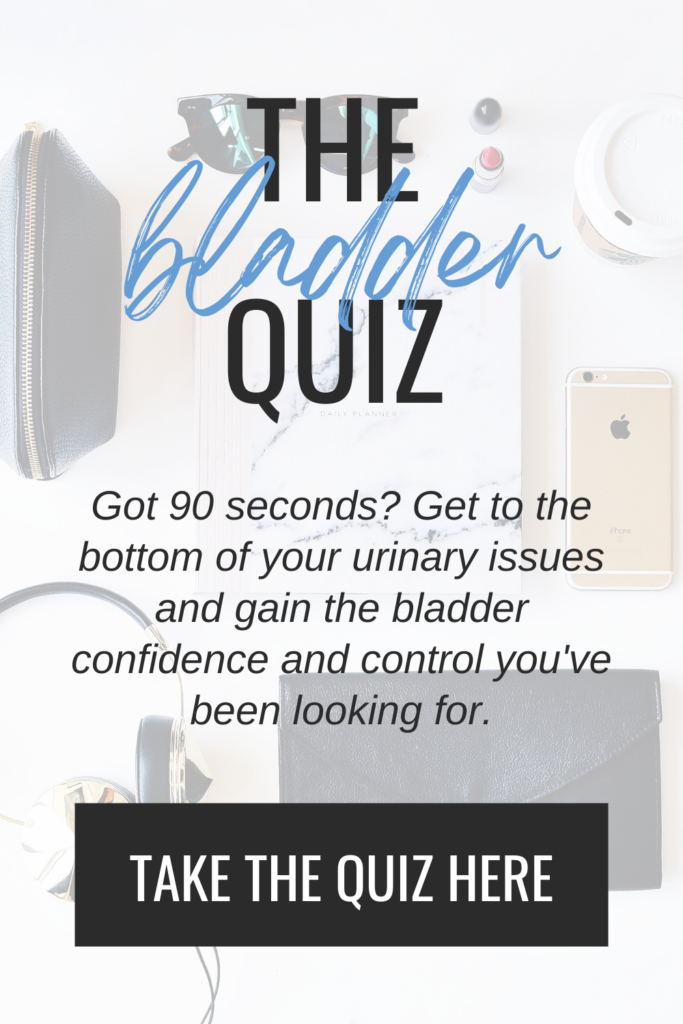I didn’t always know I wanted a home birth. To be honest…for years of my life I didn’t even think I could get pregnant, so the planning and logistics around becoming a mom often stopped at the dream of seeing those two pink lines. But once I did, and then witnessed that perfect little flutter of a heart beat on the screen a few weeks later (I still tear up thinking about that day), I knew my home was exactly where I wanted to birth my baby.
RELATED POST: What It’s Like to Want to Be a Mom: The Miserable, Messy, + Magical
RELATED POST: How I Got Pregnant Despite My Endometriosis Diagnosis
Now…the fact that I got pregnant one month into the covid pandemic (*face palm*) played an undeniably huge role in my decision to have a home birth. My hesitancy around alllllllllll the precautions that came with that time initially sparked the idea, then finding an amazing birth team and doing hours of research (more on both below) solidified that desire.
Before we go any further, please know that I know (that you know, that I know) this is my personal home birth story. I realize with full sensitivity and sympathy that not everyone has this option or ends up with a positive outcome. I don’t share the following to brag or dismiss or discount other’s experiences, but rather to contribute to the conversation and create another helpful resource on the topic….m’kay?
I’m writing this for the woman who could use a little extra motivation, encouragement, or permission in her home birth dreams. I’m writing this for the woman who’s been told her home birth goals are selfish, unrealistic, unsafe, and crazy. I’m writing this for the woman who values her medial autonomy and hasn’t heard all her options. I’m writing this for the woman who wants to rock her home birth and be as prepared as possible. Because I was all of these women.
I don’t know if I want more biological children, but I’m certain I would choose a home birth again if I did. Does a home birth come with challenges? Yes…I assume every birth is “challenging” in one way or another. But my home birth experience had so many more positives than negatives and ended up being the perfect decision for our family.
How I prepared for a home birth
Ok…if you’re here for a comprehensive list of all the things you need to purchase for a home birth (i.e. towels, sheets, shower curtain liners, a garden hose, etc.)…this is not your guide. Sorry. I’ve tried my hardest but can’t recall all the items, nor can I find anything online that resembles what I do remember, and I definitely don’t want to steer you wrong. Ultimately your midwife should supply you with a list of everything you need. My only two cents on the topic are to get all the linens from Goodwill (you’re just gonna throw them away anyway) and don’t forget to look around your home for the rest.
Instead what I’m excited to share is how I physically, mentally, and emotionally (and successfully) prepared for a positive home birth experience. I didn’t have friends or family who had done this before, so I felt the need to research, collect resources, and try anything that was within my budget and made sense to my pelvic rehab therapist brain and all-natural livin’ lovin’ heart. Everything I found useful and worthwhile is below, and it makes me smile knowing you could benefit from them too.
RELATED POST: 6 Steps to a Proactive Pregnancy: My Top Tips for Pain, Birthing, + Postpartum Healing
While a home birth experience is the only one I know, I believe all these steps could be helpful no matter where (or how) you plan to have your baby, so keep reading, friend!
SET UP MY BIRTH TEAM
Once I became pregnant, a million questions were constantly popping into my brain. Between baby names, what kind of diapers to use, deciding if it’s safe to eat sushi, and who made the comfiest maternity leggings, what I cared about most was who would make up my birth team. I wanted a group of people I could trust, felt safe and comfortable with, and knew would support my birth plan, and I ultimately settled on a midwife, doula, and my husband.
Midwife- an expert in women’s health and pregnancy care with extensive training in supporting women through pregnancy, labor, birth, and postpartum, but is not an MD like an OB-GYN.
I chose to get my prenatal care through a birth center in my area (sweet little shout-out to True North) and quickly fell in love with one of the midwives. I begggged her to be available for Sloan’s birth, and whether the starts truly aligned or she pulled a few strings, she was on call the day Sloan was born and I couldn’t have been happier or felt safer in her care.
Doula- a trained caregiver who provides physical, emotional, and informational support to the pregnant woman, her partner, and family before, during, and after childbirth.
Bringing a doula onto my birth team was thee best decision and money spent while pregnant, and allllllll the reasons behind that statement will likely get a blog post of their own one day. (PS- If you’re in the Kitsap County, WA area I ~must~ recommend Rachel Stamey.) Before birth, our doula asked questions we didn’t even know to consider, opened communication between Bob and I, helped with positioning and pain management during labor, completed cleanup afterwards (I didn’t lift a finger), and was my go-to girl postpartum for breastfeeding, advocating for my mental health, and late night questions. She was a mom, super smart best friend, and caregiver all wrapped up in one patient and selfless soul, and someone I wouldn’t want to bring a baby into the world without.
As I mentioned before, I believe a midwife and doula are essential to a home birth, but both would be helpful no matter where or how you decide to deliver your baby. Support meant E-V-E-R-Y-T-H-I-N-G to me when choosing to birth at home, and having these women encouraging me, affirming me, and literally holding me up along the way made such a difference.
PELVIC FLOOR RELAXATION EXERCISES
A lot of women think you need a strong pelvic floor to birth a baby, butttttttttt that couldn’t be further from the truth. Trust me when I say, your pelvic floor is stretched to the max during delivery, so you really couldn’t contract those muscles…even if you wanted to. That being said, it might now make sense that you need to be able to relax your pelvic floor during labor and birth to progress and dilate, promote successful pushing, prevent tearing, and heal faster postpartum.
Because learning and trying new tricks in the heat of the (painful) moment is not recommended, I practiced these pelvic floor relaxation strategies throughout my pregnancy and birth. The stretches helped open my hips ahead of time and both the contract/relax technique and piston breathing came in clutch during labor and delivery (I only labored for eight hours and pushed Sloan out in 17 minutes),
RELATED POST: My Daily Pelvic Floor Relaxation Routine + Why You Might Want to Try It Too
Again…no matter where or how your birth your baby, believe this pelvic rehab therapist when I say these techniques were non-negotiables during pregnancy, birth, and postpartum and I can’t recommend them enough. While bladder issues or fear of prolapse might lead some to think kegels and pelvic floor strengthening are the answer, tight and strong are not the same and a ~relaxed~ pelvic floor is a happy, healthy, strong, and coordinated pelvic floor every day of the week.
READ THIS BOOK
When I was pregnant, I didn’t have the time or energy to read a ton of books. I cracked open “What to Expect When You’re Expecting” and promptly threw it in the trash, skimmed a few more, and referred back to others I had read and recommended in my role as a pelvic rehab therapist. The only book I read from cover to cover while pregnant was “Birthing From Within: An Extra-Ordinary Guide to Childbirth Preparation”, gifted from a friend who also found it helpful during her natural birth, and I soaked up each and every word.
RELATED POST: The 10 [Best] Books I Recommend for Pregnancy, Birth + Postpartum
It’s admittedly a little woo-woo at times with prompts for meditation, journaling, and crafts, but it also provided Bob and I with tools that we utilized during labor (like the ice cube exercise…iykyk) and more than anything, empowered me to trust my instincts and body. I truly believe this book contributed to my successful, un-medicated, positive home birth experience, and like everything else on this list, know any and every pregnant woman would benefit from reading it.
PRACTICED HYPNOBABIES
As you can see, I’m not afraid of a little crunchy, granola-y, hippie-dippy stuff. As long as it’s not harmful, my motto is “don’t knock it til you try it”. When looking into different strategies to naturally manage pain, I finally decided (after a lot of back and forth) to try Hypnobabies. Hypnobabies is a medical-grade hypnosis technique meant to promote a peaceful, relaxing, and more comfortable pregnancy, calm and confident birth partner, and easier birth process for the mother.
I admittedly went into Hypnobabies not 100000% confident it would work or be worth my time, but I was also willing to implement anything that would help me through a physically and mentally challenging, unmediated home birth. I personally didn’t like or use the 6-week course (it contained information about the pregnancy, labor, delivery process I already knew), but I loved and listened to the hypnosis tracks daily and do believe they helped me through labor and delivery.
Was my birth pain-free with laughing and orgasms at each contraction? Um….no (although some women swear by this experience!). I still felt immense pain, but had mantras and meditations to come back to in the hard moments, kept the tracks playing in the background to stay centered, and would use the program again if the opportunity arose.
FOLLOWED THESE IG ACCOUNTS
Social media has its pros and cons, but I believe it can be a beneficial place to spend your time if you curate your experience with intention and mindfulness and are selective with the voices you listen to. Once I settled on a home birth, I sought out accounts that would speak guidance and positivity into that decision. Here’s some of my favorites –
@birthuprising- Sarah is a chiropractic doctor with a few home births of her own and is really real about empowering women to make their own medical decisions and sharing facts around common birth interventions. Even if you don’t agree with everything she says, it’s good to know both sides of a story, and I really appreciate hers.
@homesweethomebirth- Anne is a holistic midwife and natural birth coach who’s all about helping you birth YOUR way with the most confidence and least amount of trauma possible. She shares some of the best birth videos, challenges birthing “norms”, and was simply a great place to check in and feel “right” about my home birth decision.
@birthsathome- Esmeralda is a doula who makes home birth feel relaxed, natural, and doable. She has the most straightforward and easy to follow tips, the cutest merch, and an e-book home birth guide that juuuuuuust might be the perfect place to find that list of everything you need for a smooth experience.
Instagram is by far my favorite place to stay connected and get information from people I otherwise wouldn’t have access to. Home birth or not, let this encourage you to follow those who inspire and uplift you, and remove anyone who simply doesn’t.
Why I loved a home birth
[That] is how I prepared for a home birth and you can tweak, add, or subtract based on your personal preferences and needs. If at this point you’re still not sure a home birth is for you or you want a little deeper look at how it all played out for me, here’s my list of reasons I loved it and why I would do it again, plus a #noshame opportunity to share a little more about my birth story.
1. THERE’S NO PLACE LIKE HOME
I straight up LOVED the idea of birthing at home. Having access to my bed, my couch, my shower, my fridge, my toilet, my closet…being in my space and moving around as I pleased sounded like heaven compared to a hospital or birth center. And it was! While I didn’t transition from room to room like I envisioned or expected (I stayed in the tub on my dining room floor 99% of the time), it was so nice to eat homemade waffles between contractions, collapse on my couch afterwards, and climb into bed at the end of the night.
2. I’M KIIIINDA A CONTROL FREAK (IN A GOOD WAY *WINK WINK*)
As I mentioned, I got pregnant and had my daughter in the middle of the covid pandemic, and I simply didn’t want someone forcing me to wear a mask, dictate who could be there, or testing me for covid 7429380123 times. I wanted to make my own medical decisions (covid ~and~ otherwise), and knew I was more likely to have my requests honored in my home and with a birth team I trusted.
3. MAY I HAVE YOUR ATTENTION PLEASE?
I’m a biiiiiiiig fan of one on one, intentional and personalized medical care. It’s safer, easier, more fulfilling, and effective. With a home birth, I didn’t have to worry about different people running in and out, changing shifts, or ignoring my call button. I received multiple hour-plus long prenatal appointments, the entire birth team’s undivided attention during delivery, and five at-home visits between my midwife and doula afterwards. I might be most definitely am biased, but if you’re not getting this kind of attentiveness during the pregnancy and birth process…you’re missin’ out!
4. THERE’S NO TURNING BACK
However women choose to bring their baby into the world is what’s best for them and their family, but it was ~very~ important to me to have an unmedicated, low to no intervention labor and delivery. I knew if I was in any other setting than my home, the chances of people offering or even pressuring me to use medical interventions would go up. Did I have an “I can’t do this” moment? Yes I did. And Bob looked at me straight in the eyes and said “do you really want to drive to a hospital right now?”. The thought of sitting in the car for half an hour was a hard pass…and my girl was born within the hour.
5. SWEET, SWEET MEMORIES
No matter where you have your baby, I’m sure you have (I hope you have) amazing memories of that time. My favorite part about a home birth is that I get to watch my daughter grow and experience life in the exact place she came into the world. I get to go through the highs and lows of mom-ing in the same place I powered through the rollercoaster or birth. There’s something undeniably special about that sentiment, and it can’t be overlooked.



Can I say one more thing?
A home birth was hands down, without a doubt thee best decision for my family and I, and I write this resource to let you know that it really could be the best decision for you too. But allow me to also take this opportunity to remind you something I tell my patients on the daily. You ready?
You know your body better than anyone else ever will. You also know what’s best for your baby, even before you know who he or she is. And with those two things in mind, you can ultimately be confident in whatever birth choices you make. Period.
I could honestly talk about home birth for days and already have blog posts planned around the benefits of a doula, why being un-medicated mattered to me, and am even considering the idea of Bob guest blogging about his take on the topic. Long story short, I’m here to continue the conversation and be an example of a positive home birth experience, so send those questions and comments my way!
It wasn’t until the last fifty-ish years that hospital births became more common than home births. In other words…women have been delivering their babies at home for centuries (and centuries and centuries). I know if they could do it, I could do it too. And I’m so happy I did.
– Amanda
Disclaimer: The content provided here does not constitute medical advice, nor is it a substitute for personalized healthcare. I’m a doctor, but I’m not your doctor. If you have concerns about a medical condition, diagnosis, or treatment, you should consult with a licensed healthcare professional.
Disclosure: Some of the links above are affiliate links, meaning, at no additional cost to you, I will earn a commission if you click through and make a purchase. No pressure, but I have a feeling you’re gonna like what I’ve taken the time to put my recommendation behind.



















